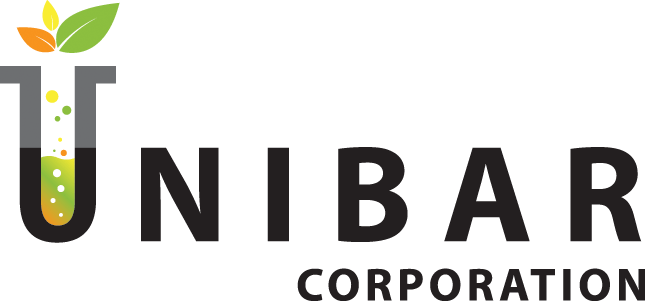CapsiClear™ First-ever Highly Enriched Capsanthin
CapsiClear™ First-ever Highly Enriched Capsanthin
CapsiClear™ First-ever Highly Enriched Capsanthin
Plant Part Used
CapsiClear™ is made from chili pepper fruit that has been concentrated to provide at least 50% Capsanthin, plus other carotenoids including Zeaxanthin and Cryptoxanthin.
Traditional Use
Carotenoids are natural red, orange, and yellow pigments found in many fruits, vegetables, and spices, such as carrots and squash. Carotenoids support eye health, which may be the reason carrots have long had a reputation for supporting healthy vision*. Capsanthin is a specific kind of Carotenoid that gives red bell peppers, chili peppers, cayenne peppers, and paprika their bright red hue. These foods have been part of the human diet for thousands of years*.
Phytochemistry
Carotenoids, including Capsanthin, are fat-soluble pigments that have antioxidant properties.* There are more than 750 Carotenoids found in plants, algae, and photosynthetic bacteria; however only 20 of these are found in the human body1Roberts RL, Green J, Lewis B. Clin Dermatol. 2009 Mar-Apr;27(2):195-201.*.
Pharmacology
Compared to Lutein, Capsanthin is an extremely potent Carotenoid due to the presence of a carbonyl group*. A highly enriched extract, CapsiClear™ Capsanthin is standardized to contain a minimum of 70% Carotenoids*. It boasts a unique, patent-pending composition that includes 50-80% Capsanthin, 5-15% Zeaxanthin, 1-5% Cryptoxanthin, and trace amounts of other Carotenoids*. CapsiClear™ is stabilized with vegetarian flaxseed oil. In addition to its stabilizing ability, flaxseed oil has the added benefit of enhancing absorption, as fat-soluble nutrients are better absorbed in the presence of fat*.
Indications
Capsanthin has not been studied as extensively as other carotenoids, such as Lutein and Zeaxanthin. However a randomized, placebo-controlled, pilot study, conducted at the Applied Physiology Laboratory at the University of North Texas, shows CapsiClear™ holds promise for improving visual performance in everyday life.* Because of the small sample size (21 healthy participants), the study was not able to establish statistical significance. However, the results suggest that CapsiClear™ may:
- Increase macular pigment density (MPD), which is linked to better visual performance*
- Reduce recovery time after exposure to bright light*
- Improve reading under different light conditions (both white and blue light)*
eAdditionally, in vivo research suggests CapsiClear™ helps maintain optimum intraocular pressure and protects eye nerves.*
Research
Macular Pigment Density
MPD is a good predictor of eye health and function. The pilot study found CapsiClear™, at a dosage of 40 mg per day for 12 weeks, may increase MPD, which is linked to clear vision, contrast sensitivity, light sensitivity, and glare recovery.* 2McFarlin, BK. Determining the effect of 12-weeks of oral CapsiClear™ supplementation (20 mg/day) on ocular health and function: a pilot study. Unpublished paper. 2019 Aug 6.3 McFarlin, BK. Determining the effect of 12-weeks of oral CapsiClear™ supplementation (40 mg/day) on ocular health and function: a pilot study. Unpublished paper. 2019 Aug 6.
Glare Recovery
The same study cited above found that CapsiClear™ may also improve glare recovery, reducing the time it takes to restore clear vision after the eyes are exposed to bright light.* This makes sense, as glare recovery is linked to MPD.*
Reading Performance
An additional finding of the pilot study was that participants who took CapsiClear™ were able to read better under both white and blue light.*
Mechanism of Action
Carotenoids, including Capsanthin, provide antioxidant protection to the eyes, as well as other parts of the body, protecting them from oxidative damage.*4Young AJ, Lowe GL. 2018 Feb;7(2):28.5Matsufuji H, et al. J Agric Food Chem. 1998;46(9):3468-72. In addition, Cryptoxanthin, one of the constituents of CapsiClear™, is a precursor to vitamin A, which is essential for healthy vision.*6Carotenoids: alpha-carotene, beta-carotene, cryptoxanthin, lycopene, Lutein, and zeaxanthin. Linus Pauling Institute Micronutrient Information Center. Oregon State University. 2019. https://lpi.oregonstate.edu/mic/dietary-factors/phytochemicals/carotenoids
Safety
Capsanthin has long been safely consumed in the human diet, as it occurs in red bell peppers, chili peppers, cayenne peppers, and paprika*. Animal research has demonstrated that after administering CapsiClear™ to rats at a dosage of 2,000 mg per kg of body weight (hundreds of times the recommended human dose) for 14 days, the animals suffered no ill effects*.7Acute oral toxicity study of Capsanthin pure in Sprague Dawley rats. Vipragen Lifesciences Study No.: VBPL-2017-G-U-T026. Study sponsored by Unibar Corporation, USA.
* These statements have not been evaluated by the Food and Drug Administration. These products are not intended to diagnose, treat, cure, or prevent any disease.

